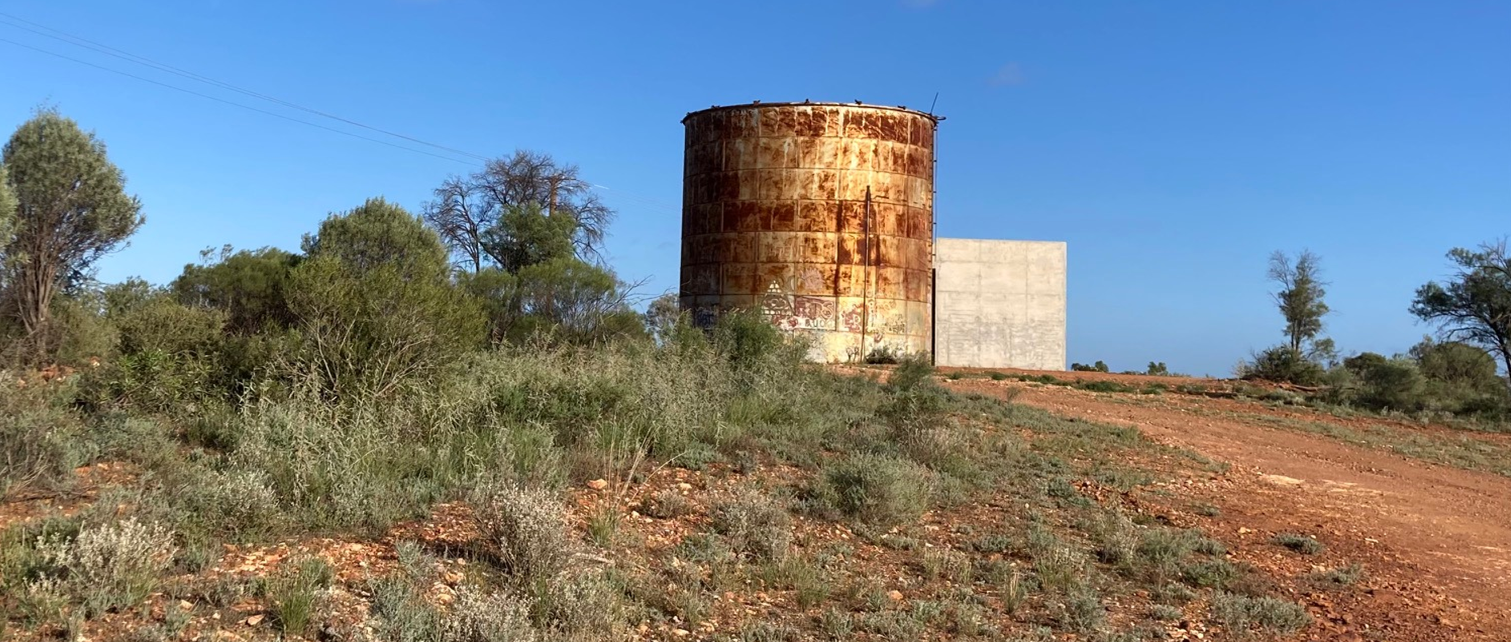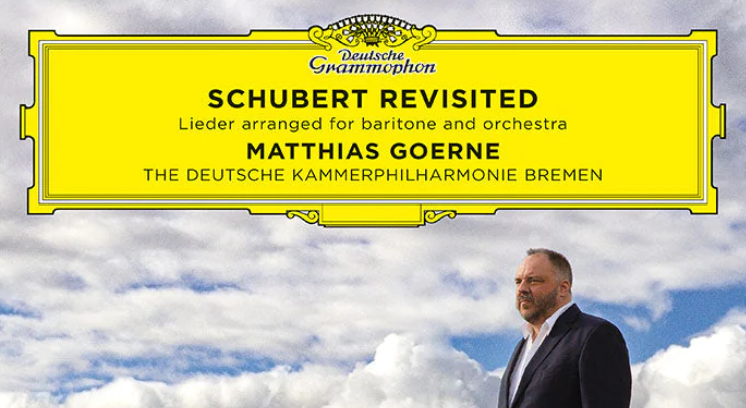The Cobar Sound Chapel – The Sky Is The Limit
The “sky is the limit” enthuses composer, sound artist and violinist Georges Lentz describing his enthralling new project, the Cobar Sound Chapel. Ironically, the possibilities are endless for the the aptly titled Cobar Sound Chapel which has long been a labour of love for Lentz and co-creator, Glenn Murcutt, the multiple prize-winning architect behind the project since 2016 and champion of the Australian vernacular in design. The Cobar Sound Chapel will be a paean to the wonders of music, sound, architecture, numerology, nature, chance, physics and very likely much more. For Lentz, music and architecture are inextricably linked. Proportions are crucial in both. He is fascinated by contemporary architecture and sees the Sound Chapel not just in architectural terms but through the lens of music as well, a perspective he applies to his own compositional activity.
Opening on April 2, 2022, the Cobar Sound Chapel is a permanent sound installation built within an obsolete water tank which dates from 1901. The analogies between sound and water are obvious. Visitors to this immersive experience will be enveloped in waves of sound as they walk through the entrance, flanked by two large concrete wings, into the 10 meter-high water tank. The shell of the tank is now a vessel for a 5 x 5 metre concrete cube into which are embedded loudspeakers. The mysticism of poet William Blake, the art work of Indigenous artist Sharron Ohlsen from the local Wangaaypuwan Ngyiambaa community and Lentz’s composition String Quartet(s) (2000 – 2022), played on a 24-hour loop by string quartet, The Noise, add to this muti-sensory experience. The Noise, comprising violinists Veronique Serret and Mirabai Peart, violist James Eccles and cellist Oliver Miller has an unusual special interest in collective improvisation as a string quartet and collaborative composition.
Flashback to 2008 and Lentz, who is also a first violinist with the Sydney Symphony Orchestra, was on tour with the company to outback Cobar, in central western New South Wales. Its population of some 4000, relying on the mining of base metals and gold, the town is located over 700 km north-west of Sydney. It is a step back in time with its precious Indigenous heritage and more recent colonial 19th century architecture. The arid, copper-red town is worlds away from western symphonic music, but it triggered in Lentz the recognition that this might be the ideal location for his brainchild.
Speaking to SoundsLikeSydney in Sydney, Lentz describes the response of Cobar’s late Mayor Lilliane Brady OAM to his suggestion. “She was really interested, but said ‘I can’t give you a single cent towards it, but we can possibly give you some land.’ So I went back and took a whole day to visit 5 sites. The last site was the water tank which I really didn’t expect – I had thought of doing an earth- mound building and I was totally unprepared for a water tank, so I remember the first moment of shifting gear and thinking ‘This throws everything out – what would we do with that?’ But pretty soon I realised that it would be the perfect thing.”
Over the years, Lentz has made the trip to Cobar, dozens of times, always by car, often stopping at Wellington for a pie and a coffee. He would undertake the long hours of driving in relished silence, without a soundtrack, “just thinking about things to do while I’m up there, about the music and imagining the projection of the music in there, the next stages of the building and how it will affect the sound because the sound and acoustics are incredibly important; and how do we address the obvious acoustic shortcomings of concrete – which I think we addressed wonderfully and nailed that. There were many things we did to get away from the perfect concrete tube which could have been an absolute disaster.”
Lentz is quick to emphasise that the Cobar Sound Chapel is a sound installation, not a performance venue. It will be at one with the elements, perhaps even subsumed by and becoming part of the living landscape, open to the sky, and without doors. “Flies and birds and wasps can fly through there” he says. “Birds sit on the rim of the tank in the morning – there is one bird that comes and greets the morning and it’s wonderful and really welcomes nature as part of the music and part of the art world. The flies are also not silent and there is this whole musical soundscape. The string quartet is also informed by that idea and there are sounds in the music that could be like a flock of birds or flies buzzing. The Noise did all sorts of incredible improvisations and there is also written music. Those natural sounds are a welcome part of it.”
As a sound artist, Lentz enthuses about the possibilities offered by electronic enhancement, which he has done himself, all of it on his laptop. In his words, “I’m not just a classical musician, I am a musician open to all sorts of sounds. There are parts where it pares back just to the string quartet and it sounds really stark and really austere. There is a tension between the austere bits and imperceptibly branching out into all sorts of possibilities. It is also exciting to work with software that’s really meant for more commercial purposes and that is struggling to do what you want it to do and that can yield unexpected results as well. There have been all sorts of things that I’ve learnt on this project, seeing what technology can do when you let it go and are open minded about what comes out – sometimes its unusable and sometimes its very usable. Balancing that openness to what randomness might give and also keeping control over the structure, on a time scale and always having in mind, no matter when, that somebody might come in just for 10 minutes – it has to provide, hopefully, a worthwhile, interesting and enriching experience” he explains.
The music will play day and night, whether there are visitors or not. Does music still exist if there is no one there to hear it – rather like the proverbial tree falling the forest. ”Absolutely!” he exclaims. “This artwork is doing its work whether someone is there or not. And most of the time especially at night, there won’t be anyone there.”
Lentz illustrates “This old rusty water tank in the middle of nowhere, in darkness -because it’s not lit up at night from the outside – will have low level lighting that comes on automatically every night. It will glow from the inside with music and sound pouring out of all day and night. I believe it is doing its work just by being. I’m looking here at my bookshelf and I can see James Joyce’s Finnegan’s Wake. How many people have read that book? Randomly looking at it on my bookshelf, it is doing its work by just being there. An artwork can do its work by just being in the world.”
The Cobar Sound Chapel will also have a crucial role to fill as the hub for an annual string festival, aimed at launching in 2023. Lasting a weekend or even a week, Lentz will invite a string quartet to travel to Cobar to perform concerts of mainly classical repertoire. “It will be very much based on a string quartet and their repertoire. Each year there may be one extra layer – a clarinet or double bass or didgeridoo or percussion. And very importantly to me and to the schools during this festival is that we will have educational activity where we go into the school and talk to the kids, play for them and explain the instruments but also inspire kids to do something different and encourage them to create their own little piece with very simple software. We will have a little performance during the festival in the sound chapel and that’s really where it gets interesting for me – to plant a seed in this environment and see what night come up. It is more meaningful than doing it in some arty inner-city venue where you’re preaching to the converted. This is much more exciting.”
Shamistha de Soysa for SoundslIkeSydney©
Images courtesy Georges Lentz





